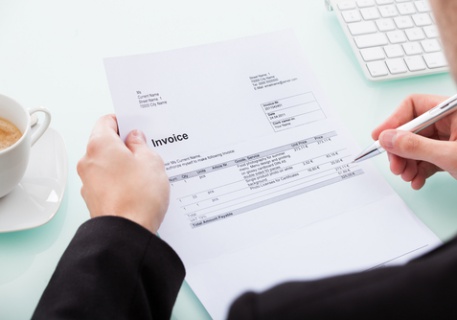Why B2B Should Quit Ignoring The Benefits of E-Invoicing

Although still underutilized industry-wide, attitudes toward electronic invoicing and billing are changing. Out of the estimated 170 billion invoices exchanged by the global business and government sectors in 2014, a mere 26 billion were sent electronically, according to the latest data from e-billing and e-invoicing company Billentis. Despite the sluggish rate at which B2B buyers and sellers are migrating to digital procurement solutions, additional research from invoice solutions provider Billtrust suggests that businesses are beginning to think strategically about their approach to billing. Considering the significant advantages of e-invoicing – from facilitated cash flow management to stronger buyer-supplier relationships – it is curious that this migration has not yet accelerated.
Customers First
Once solely the province of marketing teams, customer-first thinking has infiltrated many aspects of B2B interactions from e-commerce to invoicing. The majority (89 percent) of respondents to the Billtrust survey cited a customer-friendly billing process as a key component of customer satisfaction. The goal is making the billing and payment process as easy as possible, said Billtrust SVP of marketing Mitchell Rose. Improving customer’s day-to-day life is the first step in building a loyal customer. Experts agree more and more B2B consumers are demanding the hallmarks of a consumer-focused experience, including personalization and convenience.
Critical Cash Flow
Credit markets are still tight around the globe, and banks have yet to return to pre-recession levels. Despite growing rapidly, alternative financing options aren’t yet positioned to fill all of the funding needs. Better managing cash on hand is a must for successful businesses.
The No. 1 benefit of e-invoicing, according to the Billtrust survey, is cost savings, and those savings have the potential to be substantial. Billentis’ research found that a fully automated electronic invoice process generates a savings of 60 to 80 percent over traditional paper-based systems.
Some ways e-bills save money are obvious, such as postage or time spent managing paper invoices, but others less so. A quarter of businesses surveyed by Billtrust reported e-invoicing reduced the number of days accounts receivable remained outstanding, which means suppliers get paid faster and buyers are becoming less delinquent on their bills. Transitioning to an electronic system does involve some up-front expense, but businesses that make the investment typically recoup the expense in as little as six months.
Tech-Savvy
Slowly, embracing innovation is becoming common in B2B operations. Consider cloud adoption rates. Currently, the majority of businesses are using at least one cloud-based application, with an additional 18 percent planning to deploy cloud-based technology within the next year, according to IDG’s 2014 Cloud Computing survey. By the end of 2015, companies not using the cloud will be the minority.
E-billing also has the potential to become the dominant way bills are handled, as 75 percent of businesses plan to expand electronic invoicing and payment over the next 12 months, according to Billtrust. As another driver of change in 2015, invoice automation is changing how businesses communicate. Sensors and other IoT technologies reduce human intervention and allow staff to shift their attentions to tasks machines can’t do. Hours formerly spent handling paper invoices, getting approvals and submitting payment can be replaced with a few mouse-clicks or keystrokes, freeing up time for client-service and innovation.
Billtrust’s research suggests that the benefits of digital procurement strategy cannot be ignored. From boosting customer satisfaction, to saving money, to evolving into the technology of today’s business practices, e-invoicing seems like a no-brainer for the world’s supply chain. So why, as Billentis found, are just 15 percent of the world’s invoices digital?
The attitude expressed by Billtrust’s Rose is one of few excuses. Companies, he said, simply need to bite the bullet and adopt e-invoicing, and should “set a goal and have a defined plan” to get started. The research backs up his assessment. Businesses with a clear strategy, Billtrust found, are twice as likely as their competitors to have an electronic billing adoption rate of at least 50 percent.
